 W
WFinal Power Hall in Tokyo Dome was a professional wrestling event produced by New Japan Pro-Wrestling (NJPW). It took place on January 4, 1998 in the Tokyo Dome. Final Power Hall in Tokyo Dome was the seventh January 4 Tokyo Dome Show held by NJPW. The show drew 55,000 spectators and $6,000,000 in ticket sales. One of the focal points of the show was the retirement of wrestling legend Riki Choshu, who would wrestle five times that night against select opponents in what was billed as the Riki Road Final Message 5, the completion of a months-long "retirement tour" for Choshu. The show also featured successful defenses of the IWGP Junior Heavyweight Championship and the IWGP Heavyweight Championship, which made Final Power Hall in Tokyo Dome the first January 4 Tokyo Dome show to not have a single championship change hands. Besides the five Riki Road Final Message 5 matches the show featured eight additional matches.
 W
WWrestling World 1999 was a professional wrestling event produced by New Japan Pro-Wrestling (NJPW). It took place on January 4, 1999 in the Tokyo Dome. Wrestling World 1999 was the eighth January 4 Tokyo Dome Show held by NJPW. The show drew 52,500 spectators and $5,300,000 in ticket sales. The show featured 10 matches in total including four championship matches, three of which saw the championship change hands.
 W
WWrestling World 2000 was a professional wrestling event produced by New Japan Pro-Wrestling (NJPW). It took place on January 4, 2000 in the Tokyo Dome. Wrestling World 2000 was the ninth January 4 Tokyo Dome Show held by NJPW. The show drew 53,500 spectators and $5,900,000 in ticket sales. The event saw the return of World Championship Wrestling's Chris Benoit under the ring name Wild Pegasus, reprising the character he played for NJPW in the early to mid-1990s. The show also featured Rick Steiner and Randy Savage, both working as freelancers brought in specifically for the show. The twelve match card saw a successful defense of the IWGP Junior Heavyweight Tag Team Championship and the IWGP Junior Heavyweight Championship as well as Kensuke Sasaki defeating Genichiro Tenryu to win the IWGP Heavyweight Championship. The undercard featured a match between Masahiro Chono defeated Keiji Mutoh bearing a stipulation that the losing wrestler's faction would have to disband. Chono represented Team 2000, while Mutoh represented nWo Japan. Through Mutoh's loss nWo Japan ceased to be. It also featured the retirement match of Kazuo Yamazaki, as he wrestled his student, Yuji Nagata.
 W
WWrestling World 2001 was a professional wrestling event produced by New Japan Pro-Wrestling (NJPW). It took place on January 4 in the Tokyo Dome. Wrestling World 2001 was the tenth January 4 Tokyo Dome Show held by NJPW. The show drew 52,000 spectators. The focal point of Wrestling World 2001 was a tournament to crown a new IWGP Heavyweight Champion, which accounted for five of the nine matches on the show. No other championships were defended in 2001, marking the first year that only one title was on the line. The show saw Toshiaki Kawada wrestle twice; Kawada had previously been one of the main event wrestlers of NJPW's biggest rival All Japan Pro Wrestling.
 W
WWrestling World 2002 was a professional wrestling event produced by New Japan Pro-Wrestling (NJPW). It took place on January 4 in the Tokyo Dome. Wrestling World 2002 was the eleventh January 4 Tokyo Dome Show held by NJPW. The show drew 52,000 spectators. The show was the first January 4 Tokyo Dome Show to feature wrestlers from Pro Wrestling Noah, with the main event of the ten match show being a successful defense of the GHC Heavyweight Championship as champion Jun Akiyama defeated NJPW representative Yuji Nagata. The show also featured a successful IWGP Junior Heavyweight Championship defense by Kendo Kashin.
 W
WWrestling World 2003 was a professional wrestling event held by New Japan Pro-Wrestling (NJPW). The event took place on January 4 in the Tokyo Dome. Wrestling World 2003 was the twelfth January 4 Tokyo Dome Show promoted by NJPW. The show drew 30,000 spectators. The show featured the semi-finals and the finals of the "Young Generation Cup", an NJPW tournament for relative newcomers who have yet to establish themselves as top level wrestlers, which saw Ryushi Yanagisawa defeat Yutaka Yoshie to win the cup. The show featured a total of eleven matches, including a match for the vacant NWF Heavyweight Championship that Yoshihiro Takayama won by defeating Tsuyoshi Kosaka in the finals of a four-man tournament. The main event was a successful defense of the IWGP Heavyweight Championship as champion Yuji Nagata defeated Josh Barnett.
 W
WWrestling World 2004 was a professional wrestling event produced by New Japan Pro-Wrestling (NJPW). It took place on January 4 in the Tokyo Dome. Wrestling World 2004 was the thirteenth January 4 Tokyo Dome Show held by NJPW. The show drew 40,000 spectators. Main event of the 15 match show was a unification match between IWGP Heavyweight Champion Shinsuke Nakamura and NWF Heavyweight Champion Yoshihiro Takayama. Nakamura won the match, retiring the NWF Championship after only being active for one year. The undercard saw NJPW mainstay Jushin Thunder Liger defeat Pro Wrestling Noah's Takashi Sugiura to win the GHC Junior Heavyweight Championship, marking the first time a Noah championship changed hands at a January 4 Tokyo Dome Show. Additionally Gedo and Jado successfully defended the IWGP Junior Heavyweight Tag Team Championship against Heat and Tiger Mask and Hiroshi Tanahashi retained the IWGP U-30 Openweight Championship against Yutaka Yoshie.
 W
WBattle 7 was a professional wrestling event produced by New Japan Pro-Wrestling (NJPW) that took place on January 4, 1995 in the Tokyo Dome. Battle 7 was the fourth January 4 Tokyo Dome Show held by NJPW. The show drew 52,500 spectators and $4,800,000 in ticket sales.
 W
WBattlefield was a professional wrestling event produced by New Japan Pro-Wrestling (NJPW). It took place on January 4, 1994 in the Tokyo Dome. The show drew 48,000 spectators.
 W
WFantastic Story in Tokyo Dome was a professional wrestling event co-produced by the New Japan Pro-Wrestling (NJPW) and World Championship Wrestling (WCW) promotions. The show took place on January 4, 1993 in Tokyo's Tokyo Dome. Officially, the show drew 63,500 spectators and $3,200,000 in ticket sales. This was the second year that the show was co-promoted by the American WCW promotion. The show featured 10 matches, including four matches that featured WCW wrestlers. Fantastic Story featured three title matches, including Jushin Thunder Liger defeating Último Dragón to win the IWGP Junior Heavyweight Championship. IWGP Heavyweight Champion The Great Muta defeating Masahiro Chono to win the NWA World Heavyweight Championship in a match where the IWGP title was also on the line. Finally the show featured an IWGP Tag Team Championship match between The Hell Raisers and The Steiner Brothers that ended without a definitive winner. The show was later shown on pay-per-view (PPV) in North America as WCW/New Japan Supershow III.
 W
WThis is a list chronicling the history of professional wrestling at the Tokyo Dome. The Tokyo Dome stadium in Bunkyo, Tokyo, Japan has hosted a number of professional wrestling supercard events over the years. These events often air on pay-per-view (PPV) or are recorded for a future television broadcast. New Japan Pro-Wrestling (NJPW) is the promotion which has held the most shows at the Tokyo Dome, including the very first professional wrestling event in the Dome – Battle Satellite in Tokyo Dome on April 24, 1989. NJPW also holds their annual January 4 Tokyo Dome Show event, currently promoted under the Wrestle Kingdom name – Wrestle Kingdom is considered NJPW's biggest show of the year, their version of WrestleMania. The first January 4 show, Super Warriors in Tokyo Dome, took place in 1992 and has been held each year since then. With night two of Wrestle Kingdom 15, NJPW has held a total of 55 shows in the Tokyo Dome.
 W
WWCW/New Japan Supershow II took place on January 4, 1992, from the Tokyo Dome in Tokyo, Japan. The show was the first NJPW January 4 Dome Show, something that would become an annual tradition in NJPW and would become their biggest show of the year. The show was also the second under the name WCW/New Japan Supershow. The show was broadcast on pay-per-view (PPV) months later in America. The US PPV broadcast did not include several of the matches of the 12-match show, with only six being broadcast in America out of a total of twelve matches.
 W
WTokyo Dome is an indoor stadium in Bunkyo, Tokyo, Japan. Construction on the stadium began on May 16, 1985, and it opened on March 17, 1988. It was built on the site of the Velodrome, adjacent to the predecessor ballpark, Korakuen Stadium. It has a maximum total capacity of 57,000 depending on configuration, with an all-seating configuration of 42,000.
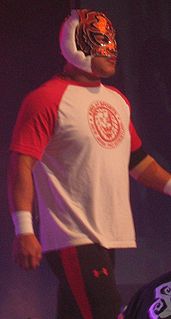 W
WToukon Festival: Wrestling World 2005 was a professional wrestling event produced by New Japan Pro-Wrestling. It took place on January 4 in the Tokyo Dome. Toukon Festival: Wrestling World 2005 was the fourteenth January 4 Tokyo Dome Show held by NJPW. Officially, the show drew 46,000 spectators. The undercard of the show featured an eight-man "submissions only" tournament which Ron Waterman won when he forced Yuji Nagata to submit in the finals. The show also saw Tiger Mask defeat Heat to win the IWGP Junior Heavyweight Championship and in the main event Shinsuke Nakamura defeated Hiroshi Tanahashi to win the IWGP U-30 Openweight Championship. The show also featured a unique "Dog Fight" match between Masahiro Chono, Riki Choshu and Hiroyoshi Tenzan. Chono defeated Chosu in the first match and as a result had to wrestle Tenzan in the next match.
 W
WToukon Shidou Chapter 1 was a professional wrestling event produced by New Japan Pro-Wrestling (NJPW). It took place on January 4 in the Tokyo Dome. Toukon Shidou Chapter 1 was the fifteenth January 4 Tokyo Dome Show held by NJPW. The show drew 31,000 spectators. The main focus of the 11 match show was the IWGP championship defenses in the semi-main event and the main event. In the semi-main event Masahiro Chono and Hiroyoshi Tenzan successfully defended the IWGP Tag Team Championship against Shiro Koshinaka and Takao Omori; while the main event featured Brock Lesnar retaining the IWGP Heavyweight Championship against Shinsuke Nakamura. For only the second time in the history of the January 4 Tokyo Dome Shows, no title changed hands.
 W
WWrestle Kingdom in Tokyo Dome was a professional wrestling pay-per-view (PPV) event co-produced by the New Japan Pro-Wrestling (NJPW) and All Japan Pro Wrestling (AJPW) promotions, which took place at the Tokyo Dome in Tokyo, Japan on January 4, 2007. It was the 16th January 4 Tokyo Dome Show and the first held under the new "Wrestle Kingdom" name. Wrestle Kingdom is traditionally NJPW's biggest event of the year and has been described as their equivalent to WWE's WrestleMania.
 W
WWrestle Kingdom II in Tokyo Dome was a professional wrestling pay-per-view (PPV) event produced by the New Japan Pro-Wrestling (NJPW) promotion, which took place at the Tokyo Dome in Tokyo, Japan on January 4, 2008. It was the 17th January 4 Tokyo Dome Show and the second held under the "Wrestle Kingdom" name. The event featured ten matches, four of which were contested for championships. Wrestle Kingdom is traditionally NJPW's biggest event of the year and has been described as their equivalent to WWE's WrestleMania.
 W
WWrestle Kingdom III in Tokyo Dome was a professional wrestling pay-per-view (PPV) event produced by the New Japan Pro-Wrestling (NJPW) promotion, which took place at the Tokyo Dome in Tokyo, Japan on January 4, 2009. It was the 18th January 4 Tokyo Dome Show and the third held under the "Wrestle Kingdom" name. The event featured eleven matches, five of which were contested for championships. Wrestle Kingdom is traditionally NJPW's biggest event of the year and has been described as their equivalent to WWE's WrestleMania.
 W
WWrestle Kingdom IV in Tokyo Dome was a professional wrestling pay-per-view (PPV) event produced by the New Japan Pro-Wrestling (NJPW) promotion, which took place at the Tokyo Dome in Tokyo, Japan on January 4, 2010. It was the 19th January 4 Tokyo Dome Show and the fourth held under the "Wrestle Kingdom" name. The event featured ten matches, five of which were contested for championships. Wrestle Kingdom is traditionally NJPW's biggest event of the year and has been described as their equivalent to WWE's WrestleMania.
 W
WWrestle Kingdom V in Tokyo Dome was a professional wrestling pay-per-view (PPV) event produced by the New Japan Pro-Wrestling (NJPW) promotion, which took place at the Tokyo Dome in Tokyo, Japan on January 4, 2011. It was the 20th January 4 Tokyo Dome Show and the fifth held under the "Wrestle Kingdom" name. The event featured thirteen matches, four of which were contested for championships. Wrestle Kingdom is traditionally NJPW's biggest event of the year and has been described as their equivalent to WWE's WrestleMania.
 W
WWrestle Kingdom VI in Tokyo Dome was a professional wrestling pay-per-view (PPV) event produced by the New Japan Pro-Wrestling (NJPW) promotion, which took place at the Tokyo Dome in Tokyo, Japan on January 4, 2012. It was the 21st January 4 Tokyo Dome Show and the sixth held under the "Wrestle Kingdom" name. This was the final Wrestle Kingdom where a Roman numeral was used as part of the event's name. The event featured twelve matches, three of which were contested for championships. Wrestle Kingdom is traditionally NJPW's biggest event of the year and has been described as their equivalent to WWE's WrestleMania.
 W
WWrestle Kingdom 7 in Tokyo Dome was a professional wrestling pay-per-view (PPV) event produced by the New Japan Pro-Wrestling (NJPW) promotion, which took place at the Tokyo Dome in Tokyo, Japan on January 4, 2013. It was the 22nd January 4 Tokyo Dome Show and the seventh held under the "Wrestle Kingdom" name. The event featured eleven matches, five of which were contested for championships. Wrestle Kingdom is traditionally NJPW's biggest event of the year and has been described as their equivalent to WWE's WrestleMania.
 W
WWrestle Kingdom 8 in Tokyo Dome was a professional wrestling pay-per-view (PPV) event produced by the New Japan Pro-Wrestling (NJPW) promotion, which took place at the Tokyo Dome in Tokyo, Japan on January 4, 2014. It was the 23rd January 4 Tokyo Dome Show and the eighth held under the "Wrestle Kingdom" name. Like the previous year, the event aired worldwide on internet pay-per-view (iPPV). Wrestle Kingdom is traditionally NJPW's biggest event of the year and has been described as their equivalent to WWE's WrestleMania.
 W
WWrestle Kingdom 9 in Tokyo Dome was a professional wrestling pay-per-view event produced by the New Japan Pro-Wrestling (NJPW) promotion, which took place at the Tokyo Dome in Tokyo, Japan on January 4, 2015. It was the 24th January 4 Tokyo Dome Show and the first event on the 2015 NJPW schedule. The event featured ten professional wrestling matches and one pre-show match, six of which were for championships.
 W
WWrestle Kingdom 10 in Tokyo Dome was a professional wrestling pay-per-view (PPV) event promoted by New Japan Pro-Wrestling (NJPW). The event took place on January 4, 2016, in Tokyo, Japan, at the Tokyo Dome. It was the 25th January 4 Tokyo Dome Show, which is NJPW's biggest annual event and has been called "the largest wrestling show in the world outside of the United States" and the "Japanese equivalent to the Super Bowl". The event featured ten matches and was main evented by Kazuchika Okada defending the IWGP Heavyweight Championship against Hiroshi Tanahashi.
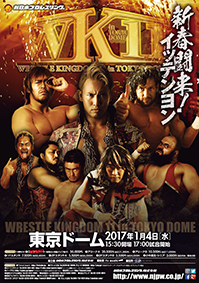 W
WWrestle Kingdom 11 in Tokyo Dome was a professional wrestling event promoted by New Japan Pro-Wrestling (NJPW). The event took place on January 4, 2017, at the Tokyo Dome in Tokyo, Japan. It was the 26th January 4 Tokyo Dome Show, which is NJPW's biggest annual event and has been called "the largest wrestling show in the world outside of the United States" and the "Japanese equivalent to the Super Bowl".
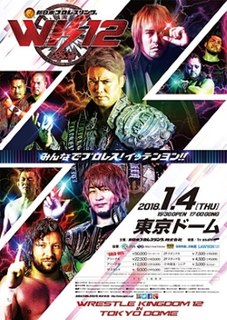 W
WWrestle Kingdom 12 in Tokyo Dome was a professional wrestling event promoted by New Japan Pro-Wrestling (NJPW). The event took place on January 4, 2018, at the Tokyo Dome in Tokyo, Japan. It was the 27th January 4 Tokyo Dome Show, which is NJPW's biggest annual event and has been called "the largest wrestling show in the world outside of the United States" and the "Japanese equivalent to the Super Bowl".
 W
WWrestle Kingdom 13 in Tokyo Dome was a professional wrestling event produced by New Japan Pro-Wrestling (NJPW). The event took place on January 4, 2019 at the Tokyo Dome in Tokyo, Japan. It was the twenty-eighth January 4 Tokyo Dome Show and the thirteenth promoted under the Wrestle Kingdom name. The event was streamed live on NJPW World and FITE TV and was aired on tape delay on AXS TV. Wrestle Kingdom is traditionally NJPW's biggest event of the year and has been described as their equivalent to WWE's WrestleMania.
 W
WWrestle Kingdom 14 in Tokyo Dome was a two-night professional wrestling pay-per-view (PPV) event produced by New Japan Pro-Wrestling (NJPW). The event took place on January 4 and 5, 2020, at the Tokyo Dome, in Tokyo, Japan. It was the 29th January 4 Tokyo Dome Show and the 14th promoted under the Wrestle Kingdom name; it was also the first time the event was held over two days, instead of taking place solely on January 4.
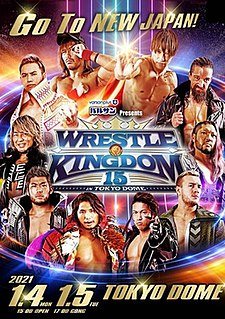 W
WWrestle Kingdom 15 in Tokyo Dome was a professional wrestling pay-per-view (PPV) event produced by New Japan Pro-Wrestling (NJPW). The event took place over two nights, on January 4 and 5, 2021 at the Tokyo Dome in Tokyo, Japan. It was the 30th January 4 Tokyo Dome Show and the 15th promoted under the Wrestle Kingdom name.
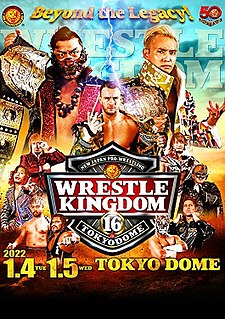 W
WWrestle Kingdom 16 was a three-day professional wrestling pay-per-view (PPV) event co-produced by the New Japan Pro-Wrestling (NJPW) and Pro Wrestling Noah (Noah) promotions. The event took place on January 4 and 5, 2022, at the Tokyo Dome, in Tokyo and January 8, at Yokohama Arena in Yokohama, Japan. It was the 31st January 4 Tokyo Dome Show and the 16th promoted under the Wrestle Kingdom name; it was also the first time the event was held over three days and the first one to take place in Yokohama. It marked the first January 4 Tokyo Dome Show since 2007's Wrestle Kingdom I to be co-produced with another wrestling promotion.
 W
WWrestling World 1996 was a professional wrestling event co-produced by the New Japan Pro-Wrestling (NJPW) and UWF International (UWFi) promotions. The event took place on January 4 in the Tokyo Dome. Wrestling World 1996 was the fifth January 4 Tokyo Dome Show held by NJPW. The show drew 54,000 spectators and $5,400,000 in ticket sales. The driving storyline behind the show was an "inter-promotional" rivalry between NJPW and UWFi, which saw wrestlers from the promotions face off in a series of three matches. Hiroshi Hase's retirement match against his former tag team partner Kensuke Sasaki was also part of the card. The main event of the show was IWGP Heavyweight Champion Keiji Mutoh losing the championship to UWFi representative Nobuhiko Takada. The undercard featured an additional title change as Jushin Thunder Liger defeated Koji Kanemoto to win the IWGP Junior Heavyweight Championship. In total the show consisted of 10 matches.
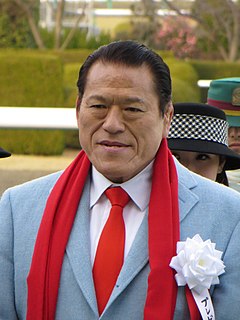 W
WWrestling World 1997 was a professional wrestling event co-produced by the New Japan Pro-Wrestling (NJPW) and Big Japan Pro Wrestling (BJW) promotions. It took place on January 4, 1997 in the Tokyo Dome. Officially, the show drew 62,500 spectators and $5,000,000 in ticket sales. The show featured 12 matches, including four matches that were promoted jointly with the BJW promotion and presented as a rivalry between the two promotions. The show featured 12 matches in total, including three title matches, two of which saw new champions crowned.